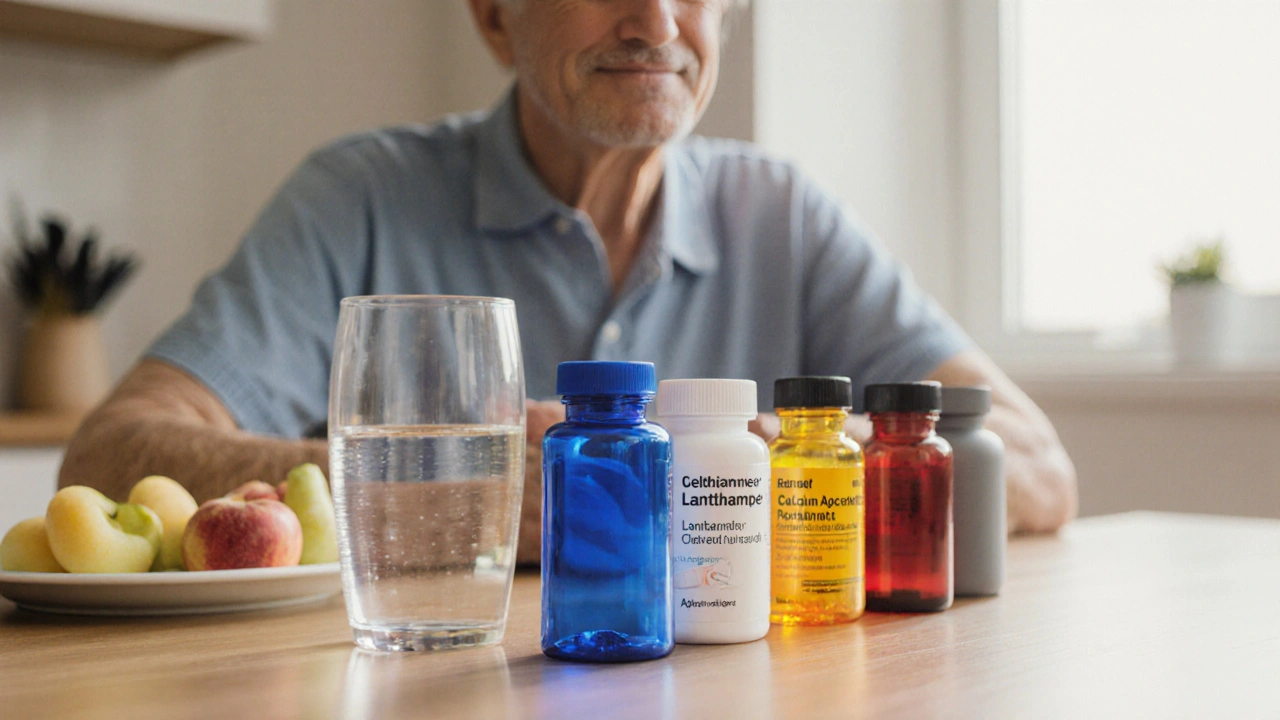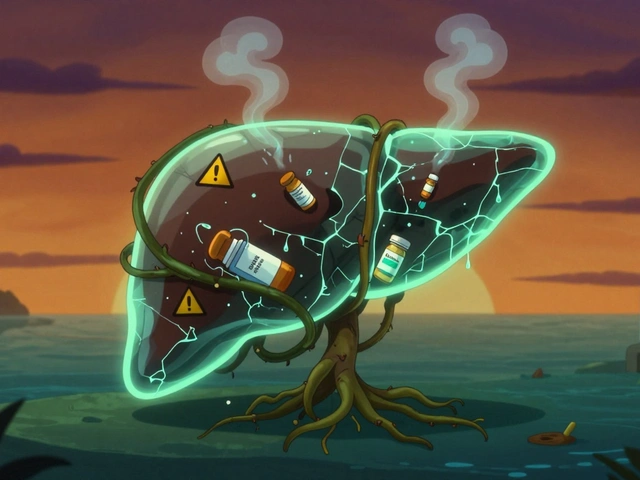Phosphate Binder Alternatives – A Practical Guide
When dealing with phosphate binder alternatives, non‑calcium‑based or low‑calcium options that help control blood phosphate in kidney disease. Also known as phosphate binders substitutes, they are essential for people with hyperphosphatemia, a condition where phosphate builds up because the kidneys can’t filter it out properly. Choosing the right alternative means looking at how well it binds phosphate, its side‑effect profile, and how it fits into a patient’s overall chronic kidney disease management plan. Below we break down the most common options and why they matter.
What Makes an Alternative Worth Considering?
First off, a good alternative must bind phosphate efficiently without adding extra calcium to the bloodstream. Too much calcium can cause vascular calcification, a serious risk for anyone with kidney trouble. That’s why many doctors steer patients toward non‑calcium binders like sevelamer, a polymer that grabs phosphate in the gut and stays out of the blood. Another popular choice is lanthanum carbonate, a chewable tablet that works similarly but with a different chemical make‑up. Both options are praised for lowering phosphate levels while keeping calcium exposure low, which helps protect arteries and heart valves.
Besides binding power, side effects matter a lot. Sevelamer can cause mild stomach upset or constipation, while lanthanum sometimes leads to nausea or a metallic taste. Some patients also worry about pill burden—sevelamer often requires several large tablets each day, whereas lanthanum’s chewable form can be easier to swallow. When a doctor prescribes a calcium acetate alternative, they’re usually balancing the need for phosphate control against the risk of extra calcium. Calcium acetate works well for people who need a bit of extra calcium, but it’s not ideal if blood calcium is already high.
Another piece of the puzzle is diet. Even the best binder can’t fully cancel out a diet high in phosphate. Foods like dairy, nuts, beans, and processed meats are rich in phosphate, and patients are often advised to limit them. Pairing a low‑phosphate diet with an appropriate binder creates a two‑pronged attack: less phosphate enters the gut, and the binder grabs what does slip through. This synergy is especially important for those on dialysis, where phosphate spikes are common between treatments.
Insurance coverage and cost also shape decisions. Sevelamer and lanthanum can be pricey, and not all plans cover them fully. In such cases, doctors might start with a cheaper calcium‑based binder and switch only if calcium levels rise too much. Some clinics run patient‑assistance programs that offset the cost of non‑calcium binders, making them more accessible. Understanding the financial side helps patients stick to their regimen without breaking the bank.
When evaluating choices, it helps to ask a few concrete questions: Does the binder lower phosphate to target levels (< 5.5 mg/dL for most CKD patients)? Does it keep calcium within safe limits? How many pills are needed each day, and can the patient manage that schedule? Does the patient experience any gastrointestinal discomfort? Answering these lets both doctor and patient pick the binder that fits the lifestyle and medical picture.
In practice, many nephrologists start patients on a calcium‑based binder like calcium acetate, then monitor calcium and phosphate trends. If calcium creeps up, they swap to a non‑calcium option such as sevelamer or lanthanum. Some patients even use a combination—low‑dose calcium acetate plus sevelamer—to get the best of both worlds. This flexible approach reflects the fact that there is no one‑size‑fits‑all solution; each regimen is tuned to the individual’s lab results, diet, pill tolerance, and insurance situation.
All of these factors—binding efficiency, side‑effects, pill count, cost, and diet—form a web of considerations that the term phosphate binder alternatives tries to capture. By understanding how each piece interacts, patients can make informed choices that protect their heart, bones, and overall kidney health. Below you’ll find a curated collection of articles that dive deeper into specific binders, compare them side‑by‑side, and offer practical tips on buying affordable generic versions online. Let’s explore the options together and find the best fit for your health journey.
Renagel (Sevelamer) vs. Top Phosphate Binders: Which Is Best?
A detailed 2025 guide comparing Renagel (sevelamer) with top phosphate binder alternatives, covering efficacy, side effects, cost, and best-use scenarios for CKD patients.






